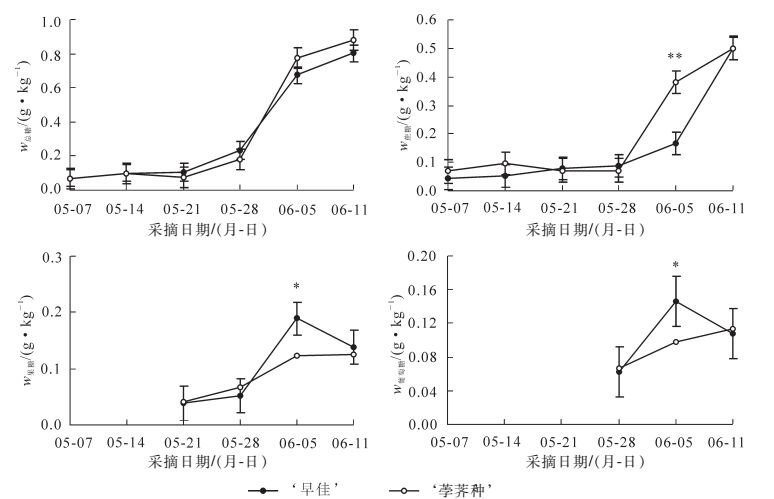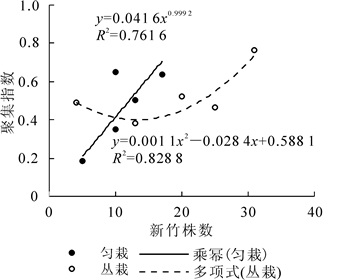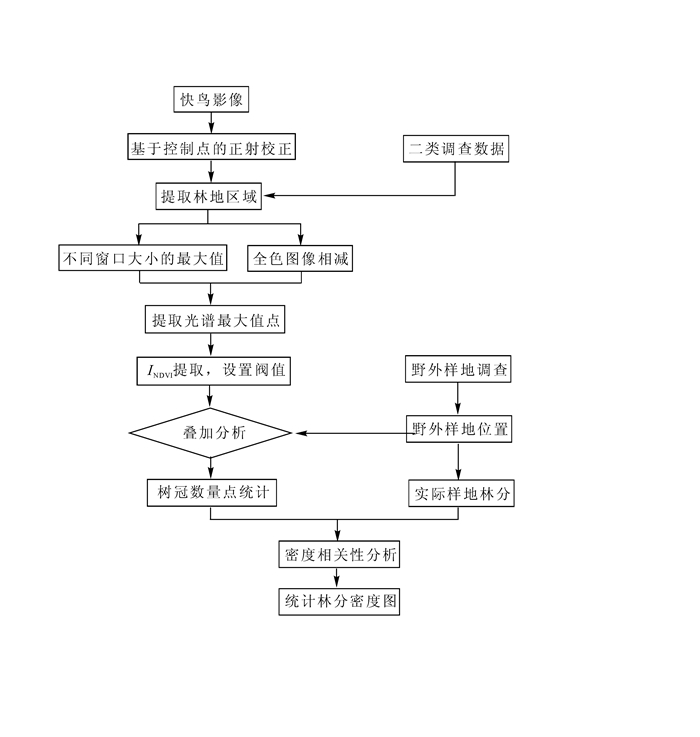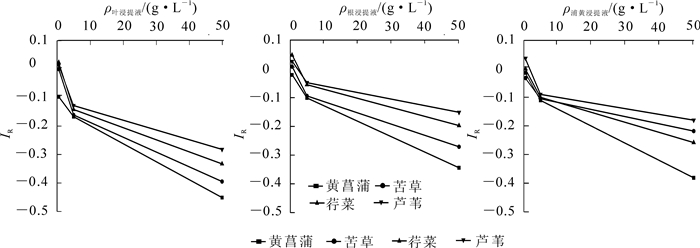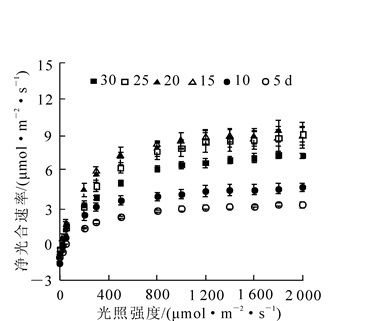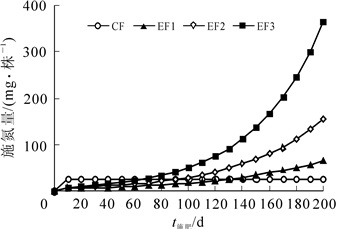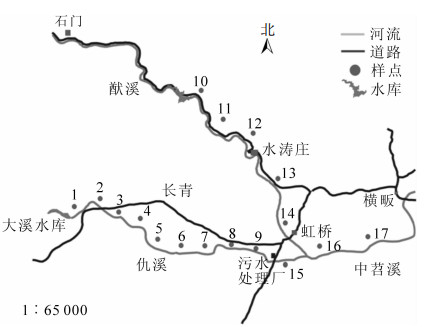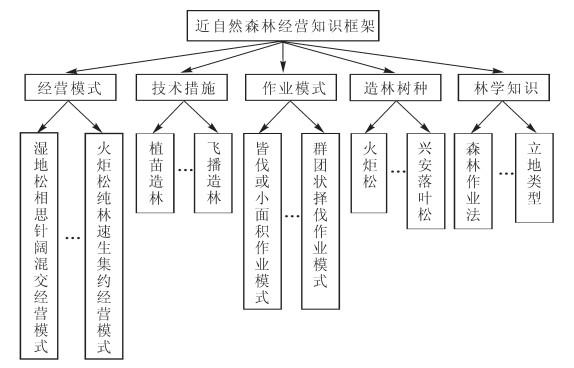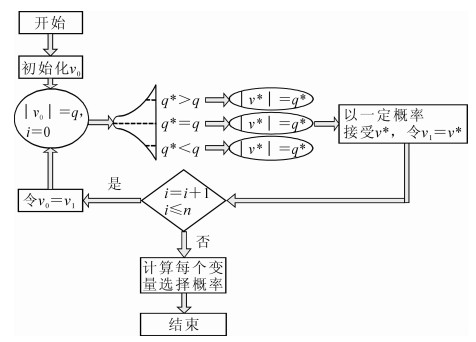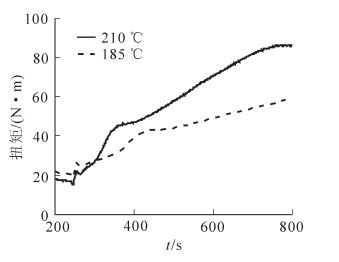2017 Vol. 34, No. 3
The applications of biochar, a pyrolytic product of biomass under the oxygen-free conditions, in improving soil fertility and other physicochemical properties as well as remediating heavy metal contaminated soil have become one of hotspots in the frontiers of environmental research. This paper reviewed the up-to-date progresses of the research concerning biochar, in an attempt to illustrate the mechanisms related to the interactions between heavy metals and biochar, including physical adsorption, ionic adsorption and exchange, precipitation and complexation, by which the bioavailability, mobility, and biotoxicity of heavy metals in soil could be effectively reduced. However, there still exist some problems, especially regarding how to enhance the long-term stability of biochar in immobilizing the metal ions. Meanwhile, the consortium study concerning the biochar-soil-crops-human health is urgently needed in the near future.
To study the genetic diversity of Juncus effusus resources, the genetic diversity of 36 J. effusus germplasm resources from both home and abroad were analyzed by Inter Simple Sequence Repeats (ISSR) markers. Analysis included an Unweighted Pair Group Method with Arithmetic Mean (UPGMA) cluster analysis. Results showed 23 primers with clear polymorphic bands selected from 72 primers. A total of 148 bands, of which 130 were polymorphic, were amplified from the 36 materials with the proportion of polymorphic loci being 87.84%. The genetic similarity coefficient for varieties was between 0.405 6 and 0.944 1, which showed rich genetic diversity. The UPGMA cluster analysis produced a genetic similarity coefficient of 0.650 3 for the boundaries with the 36 materials divided into five groups and the first group being divided into three subgroups. Results were connected to region and cultivar origin with materials from the same region mostly classified into the same group or subgroup. This research revealed the genetic diversity of J. effusus germplasm resources at the molecular level for the first time which could provide a theoretical basis for breeding.
To study the qualitative principles of two red bayberries during the maturation process, fruit weight, edible rate, soluble solids, total sugar, total acid content, organic acid, and Vitamin C of 'Zaojia' and 'Biqizhong' red bayberry were examined and compared during the riping time from 7th May to 11th June, the samples of red berry were all harvest from the same base. Results showed that the average weight of 'Zaojia' and 'Biqizhong' red bayberry were 12.5 g and 10.8 g, respectivly. The content of edible rate, sugar, and titratable acid showed no difference. As the fruit ripened, sugar increased 65.2% in the middle period, and the content of total acid content rose about 26% and then declined about 83% at the end of the riping process. However, the vitamin C of the two varieties changing trend was not consistent. The content of citric acid in riped 'Zaojia' was 92% of the total acid and oxalic acid was lowest with only 4%. So, 'Zaojia' was a citric acid type of fruit. The quality showed that 'Zaojia' had a better ratio of sugar to acid than 'Biqizhong' red bayberry. Thus, 'Zaojia' red bayberry was a citric acid dominated fruit.
Phagocytosis is an important defense mechanism against microbial pathogens, but many pathogens get the ability to subvert it. This research was aimed at discovering the potential mechanism of the gram positive and negative bacteria to survive from phagocytosis. In this study, Drosophila melanogaster S2 cells were applied as the host, and active/heat-inactivated Escherichia coli and Staphylococcus aureus were applied as invaders. Cultured S2 cells were incubated with Escherichia coli (EC), Staphylococcus aureus (SA), heat-inactivated Escherichia coli (HIEC) or Staphylococcus aureus (HISA), separately. After incubation, S2 cells were collected for transmission electron microscopy (TEM) analysis, confocal laser scanning microscopy analysis, flow cytometry (FCM) analysis and real time quantitative PCR analysis. Results showed that S2 cells could phagocytose HIEC efficiently at 1 d post-inoculation, but they could not clear HISA. HISA could survive within S2 cells for at least 4 d, and peptidoglycan (PG) and lipopolysaccharide-activated S2 cells could not digest HISA efficiently either. Comparing S2 cells, intracellular HISA did not destroy the S2 cells even at 4 d post-inoculation. The pHrodo-labeled HIEC was observed in an acidified environment at 1 h post-inoculation, but HISA was not. In addition, the percentage of phagocytized pHrodo-labeled bacteria showed no great differences whether the bacteria were engulfed alive or heat-killed. Defensin and drosomycin were up-regulated in the HISA + PG treatment, but S2 cells could not digest HISA. Also, results confirmed that antiphagocytic properties were located on the surface of heat-inactivated S. aureus but not on that of heat-inactivated E. coli. Thus, cellular immunity is important for Drosophila melanogaster S2 cells fighting gram-positive bacteria, and the role of phagocytosis shed light on clearing of the bacterial pathogens.
Clathrin heavy chain (CLTC), an important component of clathrin-coated pits, plays an important role with virus invasion of cells; however, post-transcriptional gene regulation of the CLTC gene, especially porcine CLTC gene regulation by miRNA has not yet been clearly elucidated. This study aimed to screen miRNAs that target the CLTC gene. First, bioinformatics predicted that miR-205, miR-1, miR-129-5p, miR-206, miR-19a, and miR-19b targeted the porcine CLTC gene. Then porcine CLTC 3'UTR was cloned into the psiCHECK2 vector, and the dual luciferase reporter recombinant vector psiCHECK2-3'UTR was constructed. The prediction of miRNA and the recombinant vector psiCHECK2-3'UTR were co-transfected into cells, respectively, with the scramble sequence of miRNA as a negative control (NC); then the luciferase activity was detected. A quantitative PCR (q-PCR) was also used to determine the expression of CLTC mRNA levels. Then to verify whether miRNA regulated the porcine CLTC gene through seed sequences, binding sites of psiCHECK2-3'UTR with seed sequence were mutated. Results showed that miR-205, miR-1, miR-129-5p, and miR-206 were able to significantly inhibit luciferase activity (P < 0.05). At the same time there was an overexpression of miR-1 and miR-129-5p in PK15 cells, and the q-PCR showed that the expression of CLTC mRNA level was significantly reduced (P < 0.05). Verification of whether the four miRNA (miR-205, miR-1, miR-129-5p, and miR-206) regulated the porcine CLTC gene through seed sequences showed that miR-1 mutant plasmid did not inhibit the luciferase activity. Thus, the results demonstrated that miR-1 inhibited porcine CLTC gene expression through its seed sequence binding with CLTC 3'UTR.
Spatial structure in a moso bamboo (Phyllostachys edulis) stand is an important factor in its growing process. To analyze the influence of interannual variation characteristics of spatial patterns having different planting patterns in the early stage of moso bamboo stands used as carbon sinks, an aggregation index and Ripley's K(d) function were applied from 2009 to 2013, and results were fitted with regression equations. Results showed 1) spatial patterns of new moso bamboo and established moso bamboo with an aggregated distribution pattern after five years of afforestation. 2) The aggregation index in group-planted moso bamboo stands for new moso bamboo was from 0.38 to 0.76 and for established moso bamboo was from 0.45 to 0.60; for uniformly planted moso bamboo stands, the aggregation index for new moso bamboo was from 0.18 to 0.65, and the established moso bamboo stand was from 0.18 to 0.52. 3) A strong relationship was found between the aggregation index of an established stand of moso bamboo (y) and culm number (x). For a uniformly planted moso bamboo stand, the fitted regression equation was y=0.103 7x0.419 3, R2=0.937 9; and for group-planted moso bamboo stands it was y=0.000 04x2-0.002 7x + 0.501, R2=0.985 6. 4) In the process of forest establishment, new moso bamboo carbon sink stands existed as an agglomerate distribution for different distance scales. 5) Thus, the cultivation mode influenced the moso bamboo stand's culm number and spatial distribution pattern.
To analyze application results of the k-nearest neighbor (k-NN) method and GaoFen-1 (GF-1) satellite data in forest resources investigation and monitoring, sample plot data of national continuous forest inventory, GF-1 satellite images, digital elevation model (DEM), and land utilization type pictures from a Forestry Bureau in Heilongjiang Province were used. To compare estimation accuracy of the k-NN method, least squares regression and robust regression were used based on the same test data. By using GF-1 satellite images of 16 m resolution wide field view (WFV) Multi-spectral data, models based on k-NN, least squares regression, and robust regression, models were built with a map showing stock volume distribution. Results comparing the estimated stock volume and the survey value showed that the overall accuracy for the forestry bureau scale was over 90% with performance of the k-NN method being 0.4% higher than the least squares regression and 0.2% higher than robust regression methods. Because the k-NN method was neither limited by the Gauss-Markov hypothesis nor the effects of the Multi-collinearity between the modeling variables, the research results could be used for county or Forestry Bureau scale forest stock volume estimations, and domestic GF-1 satellite images could be effectively applied to forest resource monitoring.
This study aims to estimate stand density for different forest types via local maximum (LM) filtering method from high-resolution remote sensing imagery. Stand density was extracted by the LM method to count the number of spectral maximum points extracted from a QuickBird (QB) panchromatic. Research was implemented in the Jiufeng National Forest Park. A high-accuracy digital elevation model (DEM) was used to perform precise ortho-rectification and topographic corrections to correct the images' geometric and spectral distortions. Precise positioning coordinates for the four corner points of a plot were obtained through a combination of differential GPS (DGPS) and Total Station. Spurious tree density calculated within each sample plot was extracted by counting the spectral maximum points with QB imagery. A linear regression model between the true tree density and spurious tree density was established. Spurious stand density was used as the independent variable and stand density was used as the dependent variable. Results showed that the final total correction of the multispectral images was controlled within one pixel at 0.99 Root Mean Square Error (ERMSE), and the ERMSE of the full-color image correction was 5.86. For a broadleaf forest in Jiufeng National Forest Park, a 5×5 window size and Normalized Difference Vegetation Index (INDVI) ≥ 0.2 achieved the best estimation results (R2=0.442 2, ERMSE=10.97, P < 0.01). For the coniferous, broadleaf, and whole area forest models, the coniferous forest had the best results using a 3×3 window size and INDVI ≥ 0.2 (R2=0.741 5, ERMSE=14.45, P < 0.01). The stand density planning map was also completed using the regression model and the inventory data. The accuracy of stand density estimations of coniferous forest was better than that of broadleaf forest via LM method.
As a kind of transcription factors, MADS-box genes play significant roles during floral development, but their identification and functions in Phyllostachys edulis remain unclear. Here, we performed functional analysis of the PheMADS15 gene in Ph. edulis. PheMADS15 cDNA was isolated from Phyllostachys edulis by polymerase chain reaction (PCR) (GenBank accession No. KU721916). This study also used a quantitative real-time, polymerase chain reaction (qRT-PCR) and a homology analysis. Results showed that the gene was 603 bp and encoded a protein of 200 aa, which had a typical MADS-box motif. The homology analysis showed that PheMADS15 shared 58.7% similarity with the floral meristem identity gene AP1 indicating that it belonged to A function genes. The qRT-PCR detected expression of PheMADS15 in the floral bud, glume, lemma, palea, lodicule, stamen, pistil, and young embryo. Additionally, PheMADS15 had the highest expression level in the initial-phase of flower development, especially in the floral bud formation stage. These results suggest that PheMADS15 might participate in regulating flower development of Ph. edulis.
This study was conducted to explore the allelopathic the law of action for aquatic extracts using different organs of Typha orientalis and the effect on seeds of four species of hydrophytes:Iris pseudacorus, Vallisneria natans, Nymphoides peltatum, and Phragmites australis. The petri-dish cultivation method was used to determine the influence on germination and growth of the radicle and seedling using three different concentrations including 0.5 g·L-1, 5.0 g·L-1 and 50.0 g·L-1 of root, leaf, and pollen extracts on the four prepared seeds. In addition, the activities of malondialdehyde (MDA) and superoxide dismutase (SOD) for I. pseudacorus were measured. Results showed that root, leaf, and pollen extracts of T. orientalis had strong effects on germination and seedling growth. Overall, low concentrations promoted and high concentrations inhibited with inhibition being in the order of leaf extract > pollen extract > root extract and with the effect on the radicle being greater than the seedling. For three aquatic extracts, MDA activity of Iris pseudacorus increased with the extract concentration; whereas, SOD activity showed an 'up-down' pattern. Thus, the effects of T. orientalis aqueous extracts on seeds of aquatic plants caused membrane lipid peroxidation and destroyed antioxidant enzyme systems which eventually affected the germination and growth of seedlings; meanwhile, leaves were the main organ causing allelopathic effects.
Using gas exchange and chlorophyll fluorescence technologies, changes in the net photosynthetic rate, pigment content, and chlorophyll fluorescence parameters of bamboo (Phyllostachys edulis) leaves were tested. Results showed that 1) as young bamboo leaves grew to maturity, in different developmental stages, the chlorophyll content and net photosynthetic rate increased, as did the light energy capture and utilization ability. 2) From leaf out to maturity, the maximum photochemical efficiency of leaves (φPo) did not change. 3) Also, for bamboo leaves, from leaf out to 15 d, the PS Ⅱ reaction center number increased about 54.4%. 4) The rate at which the PS Ⅱ receptor side primary quinone electron acceptor (QA) decreased and the energy required for reduction continuously decreased with the energy used to drive the QA downstream electron transfer increasing. Therefore, bamboo leaf photosynthetic functions from the time the young leaves formed to after 15 d of fully expanded leaves tended to be optimal, and leaves of Ph. edulis with normal photosynthetic physiological functions could make full use of the habitat community's solar energy resources.
The main factors for productivity of highly acidic apples have shown to be temperature and illumination. To calculate light and temperature potential productivity of Ningxia highly acidic apples, making a contribution to increase actual yield, meteorological data (1980-2015) from the surrounding region and observational data of a late-maturing cultivar of nearly four-year-old 'Granny Smith' apples were used. Illumination and temperature were revised step by step. The productivity of highly acidic apples was accumulated at different developmental stages (germination period to young fruit period and young fruit period to mature fruit period) in the Ningxia region (AHP). Results showed that the photosynthetic potential production of highly acidic apples was 114.0-146.9 t·hm-2, which was consistent with the distribution of solar photosynthetically active radiation. Light and temperature potential productivity was 68.8-142.9 t·hm-2. Compared with fresh apples, photosynthetic potential production of 'Granny Smith' apples was 15.4%-18.4% lower with light and temperature potential productivity being 10.9%-30.1% higher than fresh apples. Also, the restrictive action of temperature on fresh apples was greater than on the highly acidic apples. In addition, the spatial distribution of potential productivity for highly acidic apples was consistent with natural geographical subdivisions in Ningxia and was divided into three areas:1) north areas of Ningxia, 2) central arid zones of Ningxia, and 3) south areas of Ningxia.
An experiment was conducted to study the effect of sub-irrigation with different container types and sizes on root morphology and physiological indexes as well as water-use efficiency for containerized Pinus tabuliformis seedlings. A nested experimental design with treatments of two sizes of hard plastic containers (3.8 cm×14.0 cm and 3.8 cm×14.0 cm), two sizes of non-woven fabric containers (4.5 cm×10.0 cm and 4.5 cm×15.0 cm), and two sizes of black plastic containers (10.0 cm×10.0 cm and 10.0 cm×15.0 cm) was conducted. Results showed that different container types were significantly different for various indexes of seedling roots (P < 0.05) and the influence of root mass quality (P < 0.05). The taproot length of containerized P. tabuliformis seedlings cultivated in the hard plastic container was 15.56 cm; whereas, the black plastic container was 23.93 cm, which was 1.5 times of the length of the long container. The taproot dry weights for hard plastic containers (0.15 g) and black plastic containers (0.17 g) were not significantly different (P < 0.05), but both were significantly greater (P < 0.05) than the non-woven containers (0.13 g). The proportion of fine roots cultivated by hard long plastic containers was 71% (length), 52% (surface area), and 29% (volume), respectively. The hard plastic containers were significantly higher (P < 0.05) than the other two types of containers for accumulation of root nitrogen, phosphorus, and potassium (NPK). Meanwhile, water consumption of hard plastic containers was only 391.95 mL per plant. In summary, sub-irrigation with long, hard plastic containers (3.80 cm×21.00 cm), having more developed fine roots that could absorb nutrients, was most conducive for containerized P. tabuliformis seedlings, and thereby could improve survival. [Ch, 4 fig. 6 tab. 27 ref.]
High quality cloned seedlings of Chinese fir (Cunninghamia lanceolata), a fast-growing China-specific plant species dominant in south China, play an important role in Chinese fir forestation. To understand the effects of N exponential fertilization on seedling growth and nutrient content of Chinese fir, pot experiments were conducted in a greenhouse. One-year-old cloned seedlings were used with five N treatments per seedling including no fertilizer (ck) (0 g), conventional fertilization (CF) (0.5 g), and exponential fertilizations of EF1 (0.5 g), EF2 (1.0 g), and EF3 (2.0 g). Replications N fertilization was conducted 20 times at 10 d intervals. Height, ground diameter, biomass, and N absorption were measured after seedling growth. Analyses included state the sampling method and size. Results showed that fertilization of Chinese fir clones significantly promoted seedling height, ground diameter, and biomass (P < 0.05) with the EF2 treatment being optimal having the highest values of 59.0 cm for height, 6.0 mm for diameter (P < 0.05). N concentration and N content in different organs were leaves > roots > stems. Compared with ck, for conventional fertilization groups the N concentration increased in roots 39.6%, stems 16.6%, and leaves 41.1% with N content increasing 90.5% in roots, 119.5% in stems, and 267.2% in leaves; and for exponential fertilization groups the N concentration increased 22.6%-81.4% in roots, 27.3%-152.6% in stems, and 73.6%-135.5% in leaves with N content increasing 70.8%-138.8% in roots, 145.7%-355.8% in stems, and 347.6%-561.7% in leaves. Thus, N application rate had strong effect on growth of Chinese fir with the best method for cultivating Chinese fir cloned seedlings, considering seedling growth, N concentration, and N accumulation, being exponential N of 1 g·seedling-1.
Nitrogen is the key element for garden plant growth and ornamental quality. The research of the application of nutrient solution is an important way to prohibit the improper nitrogen application. To study the effects on the plant growth index and nutrient (P, K) absorption, a nutrient solution was applied to a typical garden plant Salvia splendens 'Chengxiang Gongzhu'. Eight different N concentration levels of 0, 5, 25, 50, 100, 150, 200, and 250 mg·L-1 (named N0, N1, N2, N3, N4, N5, N6, and N7), respectively, were applied. Five replications were conducted for each treatment. Duncan's new multiple range test was used for the statistical significance test, with the significance level of P < 0.05. Results indicated that with an increasing N level, plant height, crown diameter, ground diameter, dry weight, and chlorophyll content first significantly rose and then dropped. Plant height and plant dry weight reached a maximum with N5, and crown breadth, ground diameter, and chlorophyll content all reached a maximum with N6. As N increased, leaf area and root length significantly increasing, but the root-shoot ratio first dropped then began to flatten. 'Chengxiang Gongzhu' N uptake also increased gradually; whereas, the N absorption ratio decreased sharply from N1 to N2 followed by fluctuations from N3 to N7. In all plant organs (root, stem, leaf, and flower), the addition of N influenced the K absorption ratio more than the absorption of P. The most obvious effects of adding N were on K absorption in roots and flowers, and P absorption in flowers and leaves. Based on this study, recommended N concentration levels between 150-200 mg·L-1 would be most suitable for the growth of 'Chengxiang Gongzhu'.
Water for irrigation is a critical factor for plant growth in mountainous commercial forests. To solve this water deficiency one effective way would be application of super absorbent polymers (SAPs) that could be produced from wood processing residues. In this study two SAPs, bamboo fiber grafted with potassium acrylate (No.2) and bamboo fiber grafted with acryl amide (No.4), regenerated from bamboo sawdust were compared with commercial potassium polyacrylate (S) to determine the water-holding capacity (WHC) in three types of water (deionized water, tap water, and distilled water) and four fertilizer solutions (potassium sulfate, ammonium dihydrogen phosphate, compound fertilizer, and urea) with five gradient concentrations (0.5‰, 1.0‰, 2.0‰, 4.0‰ and 8.0‰), as well as the WHC and nutrients protection in soils with or without fertilizers with same dosage (mass ratio of SAP to soil are 1:200). Also, effects of five dosages with a mass ratio of No.4 to soil being 1:100, 1:200, 1:400, 1:600, and 1:800, were designed to determine WHC and nutrient protection in soils with and without fertilizers. Results showed that the water absorption rate in the three types of water and four types of fertilizer solutions was highest with No.4(P < 0.05); whereas, S was significantly lower than the two SAPs (P < 0.05). Water absorption rates for soils with and without fertilizers varied significantly (P < 0.05) and followed the order of No.4 > S > No.2. WHC was positively related to SAP dosage and greatly affected by the solution concentration from ionic fertilizers of potassium sulfate, ammonium dihydrogen phosphate, and compound fertilizer but not by urea, the non-ionic fertilizer. Also the highest WHC with SAP No.4, especially the treatment with highest dosage (mass ratio of SAP:soil=1:100) resulted in the greatest loss of ammonium-N, nitrate-N, and potassium when the leaching water volume exceeded the WHC of the soil. In conclusion, SAP No.4 exhibited the greatest WHC and nutrient protection with a recommended dosage of 0.50% of the SAPs based on a dry soil mass (mass ratio of SAP:soil=1:200), but should avoid fertilizing with maximum precipitation > 40 mm to minimize leaching.
Gaohong, a small town situated at the west of Hangzhou, is one of the largest production bases of compact fluorescent lamps (CFLs) in China. To determine the influence of local CFL production on temporal and spatial distribution characteristics of heavy metals in ambient bamboo forest soils during the four seasons, a systematic survey was conducted in March, July, and October of 2012 and January of 2013 with a total of 272 soil samples collected at 17 sampling sites in CFL production areas. Each sampling site was 8 m×8 m, on which four topsoil samples (0-10 cm) per time were collected by a soil auger in the diagonal position. Each sample's representativeness was ensured by collecting four field replicates in a one-meter diameter area and then mixed together as one sample. The chemical properties and heavy metals contents of the samples were determined, and the spatial and temporal distribution characteristics of heavy metals in soils was elucidated using descriptive and cluster analysis. Results showed that the average pH value of the bamboo forest soils was 5.55, and the mean organic matter content was 53.00 g·kg-1. The highest value for Hg was 0.61 mg·kg-1, two times higher than the Environmental Threshold for Agricultural Soil (HJ/T 332-2006) and the Grade Ⅱ Standard of Soil Environment Quality in China (GB 15618-1995). Spatial variability of the heavy metals was in an order of Hg > As > Zn > Se > Cu > Ni > Cr > Pb > Cd. After eliminating outliers, the heavy metals, except Ni, were non-normally distributed. The cluster analyses showed that there was a significant mutually associated compound contamination property between Zn and Pb, Ni, Cu, and Cr (P < 0.01), while Hg and the other heavy metals (Zn, Pb, Cu, Cr, Ni, As, Se, and Cd) might have originated from different sources. Thus, even though these acidic bamboo forest soils with abundant organic matter had been polluted by mercury, an essential raw material for the CFL industry, and even though heavy metal contamination had possibly been induced by anthropogenic activities, it was possible that Zn, Pb, Cu, Cr, Ni, As, Se, and Cd in the bamboo soils did not originate from the CFL industry.
To meet the demands for organizing and sharing services of forest management knowledge, the research used close to nature forest factual management knowledge data as the basis and the knowledge engineering theory as the guidance, that selected framework representation to organize and represent close to nature forest factual management knowledge; and used uncertainty matching method based on necessary and sufficient conditions as knowledge retrieval matching method. Based on the above content, the research designed a comparatively universal forest factual knowledge data transmission structure combined with the JSON data interchange format, developed forest knowledge service system on the basis of Java EE technology, then realize the function that including the management and searching of knowledge data. The running results of this system showed that the system with framework representation was more suitable for the management and sharing of forest factual knowledge than the other expert decision making system and knowledge data management system. It can provide knowledge query and sharing services for many forestry workers.
Based on the geographical position and the composition of tourists, choosen Yuexiu Park, Huolu Mountain Forest Park and Huangshanlu Forest Park, these three typical urban park in Guangzhou are the main research objects. It summarized three typical structure of green space of urban park in Guangzhou. In order to avoid the other factors such as:road system, building facilities and so on to disturb the results. Followed by the forest space, half open savanna space and open space, selected 3 pieces of typicality jungle space, covers an area of 20 m×40 m in each park; 3 typical half open forest space, the area is 20 m×40 m; 3 typical open green space, the area is 30 m×30 m. Using the AHP analytic hierarchy process, SBE method, it is concluded that the landscape score of the sample. In combination with the analysis data by SPSS 18.0. Then this paper made a quantitative comparison on degree of landscape beauty with typical urban park in Guangzhou, according to the established evaluation model for research. The results shows:(1) allocation proportion of 3 types of space structure in each urban park is different. (2) It is rich in plant species composition. There are 280 kinds of arbor and bush plants, more than 170 kinds of shrubs. Wild plant resources are rich in forest park, 464 species belonging to 107 families, 284 genera. (3) To reflect the characteristics of city park, the score from high to low by AHP method is:Yuexiu Park, Huolu Mountain Forest Park, Huangshanlu Forest Park; the score by SBE is:Yuexiu Park, Huangshanlu Forest Park, Huolu Mountain Forest Park. There are differences between the two methods of landscape evaluation. AHP quality score value is:forest landscape space > half open space > open space. SBE score is:forest space > half open space > open space. The results are consistent.
Based on TM image data in the years of 2004, 2009 and 2014 in Zhengzhou, the research analyzed the land use/cover changes, estimated the ecosystem service value (ESV) of the survey area according to the "equivalent value per unit area of ecosystem services in China", analyzed its spatio-temporal characteristics, examined the correlation between the ESV evolution and the land use changes. The results showed that due to the substantial growth of forest land area, the ESV was increased from 103.31×8 to 125.69×8 yuan per year between 2004 and 2014, and the average annual growth rate was 2.0 per cent. The growth of forest land area had caused significant increase in the ESV of the raw materials, aesthetic landscape and climate regulation. Furthermore, the ESV changes showed obvious regional differences, which were most significant in Xinmi and Dengfeng. Results showed the temporal change of ESV in Zhengzhou was dramatic, and the regional change was asymmetric, which indicated a "west high, east low" and "south high, north low" pattern. The ESV of the survey area had significant positive correlation with the area of forest land, and the correlation coefficient was 0.855, while there was no significant linear correlation with other types of land area. The forest land area growth is the source of increasing regional ecosystem service value.
To develop a calibration model for rapid, accurate, and nondestructive grading of wood on the basis of knots, near infrared spectroscopy (NIRS) technology was used on coniferous boards from Douglas fir (Pseudotsuga menziesii), Chinese hemlock (Tsuga chinensis), Dragon spruce (Picea asperata), and Spruce (Picea glauca and Picea engelmannii)-Pine (Pinus contorta)-Fir (Abies lasiocarpa) (SPF). Altogether 1 056 spectrums of samples were obtained in the wavelength range of 1 000-1 650 nm by SmartEye1700. Spectral pretreatment methods, including standard normal variate (SNV) and first derivative (FD) as well as modelling methods such as principal component analysis-linear discriminant analysis (PCA-LDA), partial least squares-linear discriminant analysis (PLS-LDA), and least squares-support vector machine (LS-SVM) were used and compared. The experiments also explored the ability of using a model built for one species to predict samples from other species. Then, a random frog algorithm was applied to select effective wavelengths (EWs). Finally, a LS-SVM model was established to detect knot defect on board surfaces based on eight effective wavelengths (EWs) or only 1.23% of the full wavelengths with results compared based on sensitivity, specificity, and accuracy. Results of the validation set of mixed boards were:sensitivity——98.49%, specificity——93.42%, and accuracy——96.30%. Thus, near infrared spectroscopy combined with chemometric methods could be used to detect surface knots on boards for different species of wood with the random frog algorithm being a powerful tool for selecting efficient variables to optimize the model and improve detection efficiency.
Poly (lactic acid)(PLA), a biodegradable polyester material which is derived from renewable resources and has broad development prospects, as well as thermoplastic vulcanizates (TPV) that use PLA as a matrice material, could help meet the demands of sustainable development. The objectives of this study were to prepare a novel biobased TPVs together with determine the influences of temperature and the content of a zinc ionomer of (ethylene-acrylic acid) copolymer (EMAA-Zn) on the mechanical properties as well as the microstructure of the PLA-based TPVs. In this work, using a PLA as the plastic phase and an epoxidized rubber of (ethylene-butyl acrylate-glycidyl methacrylate) terpolymer (EBA-GMA) as the rubber phase along with an EMAA-Zn as a vulcanizing agent, PLA-based TPVs with different ratio of rubber and plastics were prepared using the dynamic vulcanization method. Results revealed that in a certain temperature range (185-210℃), increasing the temperature was conducive to the crosslinking of ENA-GMA with the best compounding temperature being 210℃. Data from mechanical properties showed that when the PLA/EBA-GMA/EMAA-Zn ratio was 30:70:7.5, the sample had the best mechanical properties with a tensile strength of 14.2 MPa and an elongation up to 500%. However, when the content of EMAA-Zn was higher (more than 7.5%), surface hardness of the samples gradually increased, but the elongation at break of the samples gradually decreased. Finally, scanning electron microscope (SEM) and transmission electron microscope (TEM) images showed that the PLA-based TPV samples exhibited the unique "sea-island" microstructure characteristic of TPV materials (that is the continuous PLA phase and dispersed rubber phase) appeared as well. This indicates that the phase inversion has been happened.
The weakness and externality of forestry would reduce the enthusiasm of farmers and hinder the development of forestry. Therefore, since 2009, the Central Government has launched forestry subsidies policy such as afforestation subsidy and tending subsidy. Whether forestry subsidies can affect the farmers' forestry investment or not? Based on the Central Government Forestry Subsidy pilot project in Zhejiang Province, this study selected 311 farmer households from Jiande City and Kaihua County, using Tobit model for empirical analysis. The results showed that forestry subsidy policies could significantly encourage farmers to increase investment in forestry, each additional 1 yuan the farmers received from afforestation or tending subsidies would stimulate farmers to increase input by 0.13 yuan in forestry. The results passed the significant level test by 10 per cent and 1 per cent respectively. Variables including incomes from forestry and non-forestry, tree species and age of forest had a significantly positive impact on farmers' forestry investment; age of farmer household head and age of forest had a significantly negative impact on farmers' forestry input.





